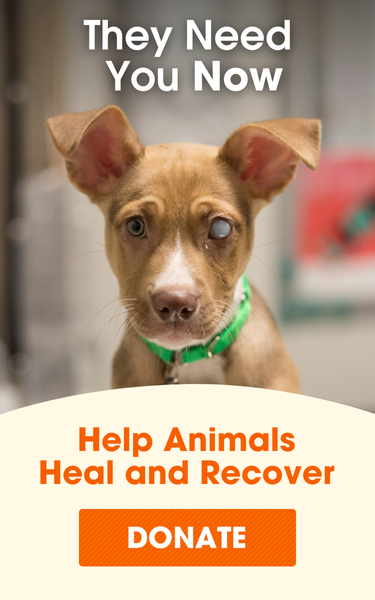
Spay/Neuter Your Pet

By spaying or neutering your pet, you’ll help control the pet homelessness crisis. Millions of healthy dogs and cats are euthanized in the United States each year simply because there aren’t enough homes to go around. There are also medical and behavioral benefits to spaying (female pets) and neutering (male pets).
Here are some of the medical benefits:
- Your female pet will live a longer, healthier life. Spaying prevents uterine infections and decreases the incidence of breast tumors, which are malignant or cancerous in about 50 percent of dogs and 90 percent of cats. Spaying your pet before her first heat offers the best protection from these diseases.
- Neutering your male companion prevents testicular cancer and some prostate problems.
And behavioral benefits:
- Your spayed female pet won't go into heat. While cycles can vary, female felines usually go into heat four to five days every three weeks during breeding season. In an effort to advertise for mates, they'll yowl and urinate more frequently—sometimes all over the house!
- Your male dog will be less likely to roam away from home. An intact male will do just about anything to find a mate, including finding creative ways escape from the house. Once he's free to roam, he risks injury in traffic and fights with other animals.
- Your neutered male may be better behaved. Unneutered dogs and cats are more likely to mark their territory by spraying strong-smelling urine all over the house. Your dog might be less likely to mount other dogs, people and inanimate objects after he’s neutered. Some aggression problems may be avoided by early neutering.
Spaying/neutering your pets is also highly cost-effective. The cost of your pet's spay/neuter surgery is far less than the cost of having and caring for a litter.
Debunking Spay/Neuter Myths and Misconceptions
- Spaying or neutering will not cause your pet to become overweight. Lack of exercise and overfeeding will cause your pet to pack on the extra pounds—not neutering. Your pet will remain fit and trim if you continue to provide exercise and monitor food intake.
- Neutering is not a quick fix for all behavior problems. Although neutering your pet often reduces undesirable behaviors caused by a higher level of testosterone, there’s no guarantee that your dog’s behavior will change after he’s neutered. Although the surgery will reduce the amount of testosterone in your dog’s system, it won’t eliminate the hormone completely. Neutering will also not reduce behaviors that your pet has learned or that have become habitual. The effects of neutering are largely dependent on your dog’s individual personality, physiology and history.
When to Spay or Neuter Your Pet
- For dogs: While the traditional age for neutering is six to nine months, healthy puppies as young as eight weeks old can be neutered. Dogs can be neutered as adults as well, although there’s a slightly higher risk of post-operative complications in older dogs, dogs that are overweight or dogs that have health problems.
- For cats: It is generally considered safe for kittens as young as eight weeks old to be spayed or neutered. To potentially avoid the start of urine spraying and eliminate the chance for pregnancy, it’s advisable to schedule the surgery before your cat reaches five months of age. It’s possible to spay a female cat while she’s in heat.
Talk to your veterinarian to determine the best time to spay or neuter your pet.
Helping Your Pet Before and After Surgery
Your veterinary clinic will provide pre-surgical advice that you should follow. In general, avoid giving your adult dog or cat any food after midnight the night before surgery. A puppy or kitten, however, needs adequate nutrition, and your veterinarian may advise that food not be withheld.
Your veterinarian can also provide post-operative instructions for you to follow. Although your pet may experience some discomfort after surgery, your veterinarian can take measures to control pain. Depending on the procedure performed, medication for pain may be sent home with your pet.
Here are tips for a safe and comfortable recovery:
- Provide your pet with a quiet place to recover indoors and away from other animals.
- Prevent your pet from running and jumping for up to two weeks following surgery, or as long as your veterinarian recommends.
- Prevent your pet from licking the incision site, which may cause infection, by using a well fitted Elizabethan collar.
- Avoid bathing your pet for at least ten days after surgery.
- Check the incision site daily to confirm proper healing.
If you notice any redness, swelling or discharge at the surgery site, or if the incision is open, please contact your veterinarian. Also call your veterinarian if your pet is lethargic, has a decreased appetite, is vomiting or has diarrhea or any other concerns following surgery.

